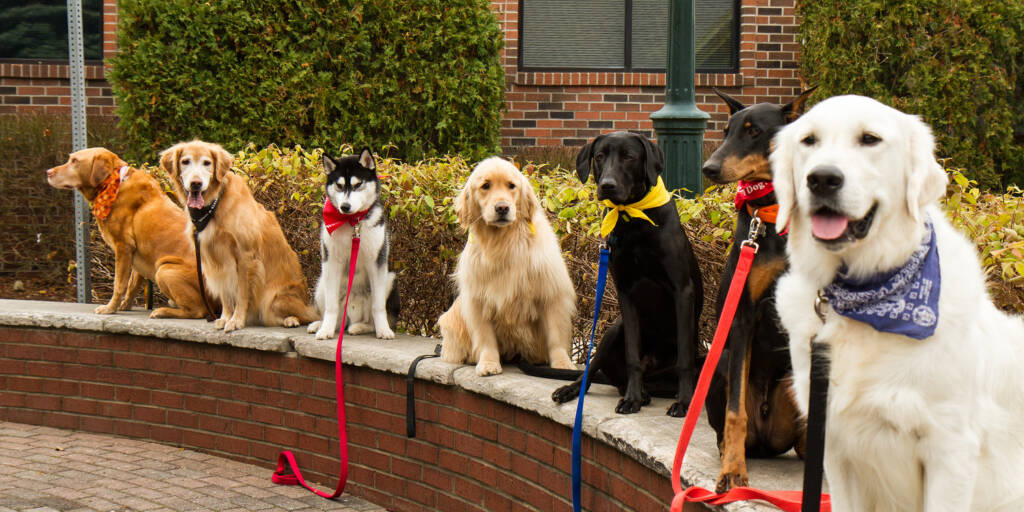Labrador Be Trained To Do: For the safety and well-being of your Labrador as well as yours, it is highly recommended that you train your dog. In my experience, I have learned that while you can never start training too early, you can also never begin training too late. Many people associate training with simple commands such as sitting, rolling over, housebreaking, and crate training. You can also train a Labrador to do many other things besides just being a pet. Now, let’s take a look at the different things that a Labrador can do.
There is a myriad of things a Labrador can be trained to do, from simple commands to very intricate tasks. Some examples of what a Labrador can be trained for include:
- The typical indoor house commands: sit, stay, and wait for release are examples
- When training a dog to walk on a leash
- It is recommended to train a guard dog
- Specialized training – for example, police and military dogs, therapy dogs, and guide dogs
Compared to other breeds, Labradors have a high level of intelligence, which makes them relatively easy to train. The purpose of this article is to talk about some of the easier things that we can train our labs to do. There are several ways for the average owner to help train at home that is more affordable, convenient, and effective than you might expect. You will learn about these details in this article, and I will additionally explain why following through with long-term training is essential.
Labrador Training: Simple Things to Do
While some of what you train your Labrador for may simply be for entertainment, most of what you train them for should have a very specific purpose or goal. The purpose of the purposeful task will likely relate to your and your dog’s safety and peace of mind in certain situations. To give you some examples, several examples are provided here:
Hold on until released
The safety training technique of teaching your dog to stay in one place and stay there until you release them is a very important one. The risk is reduced if there are dangerous situations nearby or if they are in the middle of something hazardous. In chaotic situations, this can also help keep your dog from getting lost. The benefit of this is that you can focus on the immediate problem at hand rather than worrying about where your dog is.
Keep obedience on a Leash
It is very important for you as a dog owner to manage your pet on a leash. We need to make sure that our pets are not pulling us along by pulling on the leash. Our dogs are in control of where they go, and we are the ones who decide where they go, not the other way around! In this way, everyone stays safe and walks more pleasantly.
Puppy bites are not allowed!
You should be aware that play-biting will more than likely emerge during the puppy stage of your Lab’s life. When playing or roughhousing, many kids bite, and they don’t realize that they’re doing something wrong because they haven’t been taught otherwise. You can prevent future accidents and aggression by teaching your Lab that biting is not acceptable.
Dog training for guard dogs
There are a lot of reasons why Labradors make great guard dogs. It is important to remember, however, that their effectiveness can be severely reduced if they are not properly prepared from the beginning. There are a few aspects that are important at the start of the training process.
Bark only when necessary
I believe it is very important to teach your dog that he should only bark when he feels threatened or when his owners are in danger. As a result, you can become alerted to anything amiss, either to yourself or to others. If your dog barks all the time, it may cause the dog to become desensitized to your presence. Does anyone remember the Boy Who Cried Wolf?
Barrier dogs
Another great way to protect yourself and your family is to teach your dog to stand in between you and a perceived threat. In essence, you are creating a barrier between yourself and potential danger. The additional benefit of this is that it will allow her to feel like she is protecting you without the need to use aggression. There is a good chance that the threat will back down if a woman simply guards you against something she perceives as a threat.
Training specialized
I think you must understand the capabilities of Labrador Retrievers, which is why I mentioned the various types of specialized training. The only problem with these kinds of training is that they are generally going to need to be provided by professionals. That can be quite an expensive proposition.
The cost of certain types of specialized training may not be as high as you think based on your lifestyle. An owner is likely to save both time and money by training a gun dog in the long run, for example. Additionally, some of the skills that can be taught that may not be instinctual to Labradors may also be taxing on the wallet.
As well as this, pursuing some of these specialized skills can be extremely rewarding for both the owner and the Lab, as well. Providing families in need with service dogs such as Labradors can be a wonderful blessing.
Different types of training
There are a variety of ways in which you can train your dog. Traditionally, the go-to method for finding a professional involved seeking him out in person. As a result of advances in technology, it has been possible to conduct online training from the comfort of your own home. Both options have their advantages and disadvantages. How do you decide which is most suitable for you?
On-Site Training
Pros:
- A method that has been tried and tested for many years
- Has generally been scheduled in a consistent and structured format for many years
- It is helpful for the patient if they are separated from their homes and environments
Cons:
- As a result, it often requires a rigorous schedule as well as a lot of time
- As you’ll usually have to travel with your dog to the training location
- This results in the owner being less involved
- And also expensive!
Taking training online
Pros:
- Schedules that are convenient and flexible
- It is possible to do this from anywhere as long as you have a device and an internet connection
- Owner involvement is encouraged
- And it is very inexpensive!
Cons:
- Modern society may feel less formal than a traditional one
- Because it is easier to not follow rules
- When it comes to the owner’s responsibility
Training online is my pick
While every individual’s situation is different, I strongly recommend online training as an alternative to in-person training. In the Internet era, you will find a wide range of dog-training resources available right at your fingertips. In addition to reading text articles and books, owners can sign up for a range of online programs that provide more in-depth knowledge. I recommend Brain Training For Dogs, by Adrienne Farricelli, as being one of the best.
Adriene uses a basic progressive training program that breaks the training down into school-themed modules, such as Preschool, Elementary School, High School, College, University, Graduation, and Einstein.
Why Is Training Good For Labradors?
You should train your Labrador in both mental and physical ways to ensure that they live a happy and healthy life. To provide these people with long-term benefits, it can be beneficial to challenge them cognitively and physically. It should also be noted that when you perform your required commands, you are usually rewarded. You know how much they love being rewarded.
Physical Health
Depending on the weather, your dog will need to be exercised daily. Oftentimes, there may not be enough opportunities for your dog to exercise. Training can serve as a substitute for daily exercise for you as well as promote the physical health of your dog in some instances.
Mental Health
The more that a laboratory is exposed to training, the more likely it is to experience increased cognitive capabilities. It stands to reason that, like us, the more opportunities they have to exercise their minds the more likely they will be mentally fit.
Overall Training for Labradors
The most important thing you can do for your Labrador is to train him properly. Laboratories are capable of learning a variety of skills and should be allowed to enhance their minds to the fullest extent possible.
In today’s world, there are many ways in which training can take place. There is much to be said about online training as an effective, affordable, convenient, and effective alternative to classroom training. Even though you should begin as early as possible, you can start whenever you want!
Are Labradors easy to train?
What skills do Labradors have?
Will a Lab protect its owner?
Definitely! The protective behavior of dogs is highly influenced by their feelings towards unfamiliar people and animals. It’s not a reflection of their feelings toward you. Even a Labrador without any protective instincts can be completely loving and loyal to its owner.
Do Labradors bark a lot?
Labrador Retrievers are generally not particularly “barky” dogs. They are gentle, easy to socialize dogs. Labrador Retriever barking can be controlled with proper training and reinforcement.



